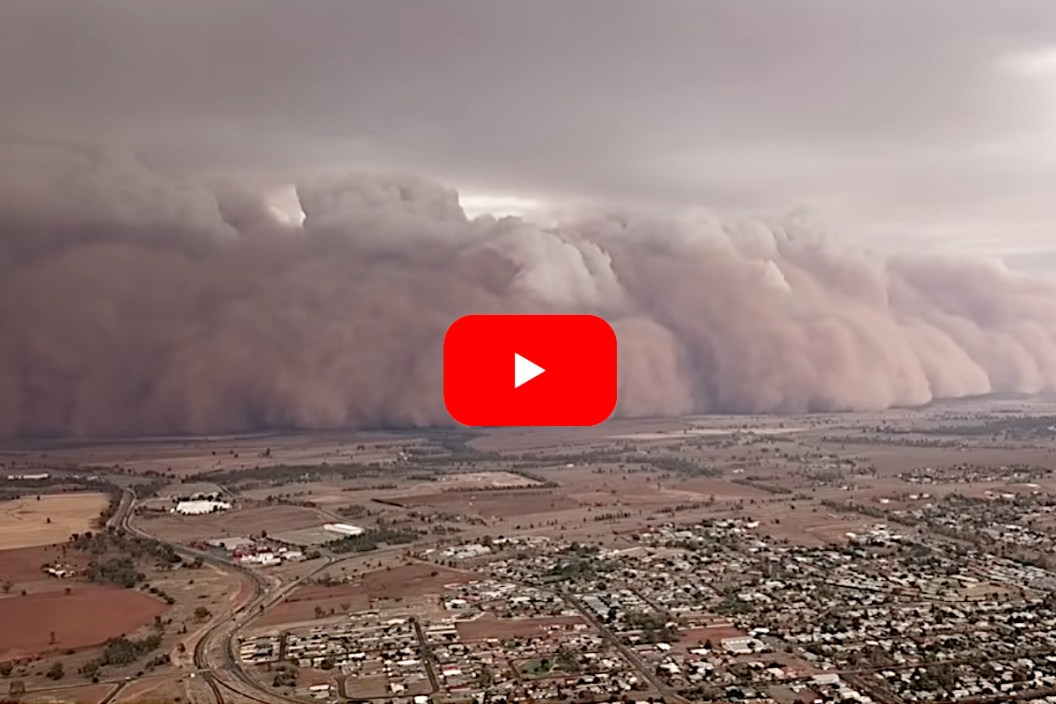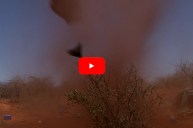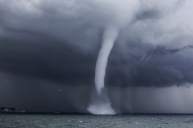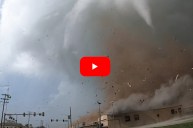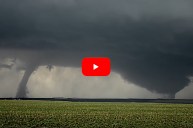When it comes to the weather, there are few sights as intimidating as a haboob dust storm. Try to imagine the scene in "Mad Max Fury Road" when the high-speed chase goes into a massive storm with raging sands. That was Hollywood's version of a haboob, but it actually wasn't that far off from what a real one looks like. Stemming from an Arabic word for sandstorms common to the Middle East, haboob dust storms are as scary as they are dangerous. In fact, as you'll see in the video below, the real thing looks like the product of modern-day CGI effects, as you simply wouldn't see something like this in the West, and many of us aren't familiar with the natural phenomenon the Eastern Hemisphere experiences fairly regularly. The high winds and lightning present real dangers to local residents, particular motorists. As incredible as they are to look at from an aerial view like this, they're equally as horrifying in person. In the video below, we see a severe haboob hit New South Wales, Australia, in arresting fashion.
According to the National Oceanic and Atmospheric Administration (NOAA), haboobs are most common in dry, arid and semiarid regions where large thunderstorms can blow through quickly and cause tons of damage. These windstorms usually form as a storm is dying and releasing heavy rains. For one of these storms to form, the strong winds must push down, often in a microburst or downburst. When the winds hit the ground, they pick up loose dust particles forming the giant clouds of sand you saw here. While this type of storm is often associated with places like Sudan, Iraq, Kuwait, or parts of Africa, and Australia, these storms can happen almost anywhere, especially in places with a monsoon season. Wind speeds can reach 60-70 miles an hour in the right circumstances, making them dangerous storms. Not only can they bury a place in a lot of sand quickly, they can also knock down power lines and cause traffic accidents with drivers who cannot see.
One massive Arizona dust storm went wildly viral in 2018 after striking heavily populated Phoenix. Other dust storms like this have been recorded by meteorologists in Texas, Colorado, New Mexico, California, Washington, and even as far North as Idaho. Note that most of these are in the Southwest. NOAA says Southern Arizona may be hit with up to three of these every year.
While the National Weather Service can put out dust storm warnings sometimes, these storms often hit quickly and with little warning. NWS recommends pulling off the road and turning your lights off if you get caught in one in your vehicle. Turning the lights off helps to keep other drivers from being confused and crashing into you while trying to follow. The good news is that most of these storms last less than 30 minutes, so you should be able to wait them out. Chalk it up as yet another one of nature's more fantastic sights!
For more outdoor content from Travis Smola, be sure to follow him on Twitter and check out his Geocaching and Outdoors with Travis YouTube channels.
